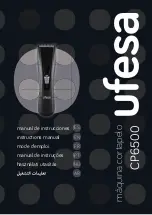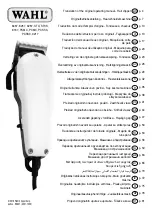
11
2�5 MAINTENANCE SAFETY
1.
Good maintenance is your responsibility. Poor
maintenance is an invitation to trouble.
2.
Follow good shop practices.
•
Keep service
area clean and
dry.
•
Be sure electri
-
cal outlets
and tools are
properly
grounded.
•
Use adequate
light for the job
at hand.
3.
Make sure there is plenty of ventilation. Never
operate the engine of the towing vehicle in a
closed building. The exhaust fumes may cause
asphyxiation.
4.
Before working on this machine, shut off the
engine, set the brake, and turn fuel valve off.
5.
Never work under equipment unless it is blocked
securely.
6.
Always use personal protection devices such
as eye, hand and hearing protectors, when
performing any service or maintenance work.
Use heavy or leather gloves when handling
blades.
7.
Where replacement parts are necessary for
periodic maintenance and servicing, genuine
factory replacement parts must be used to restore
your equipment to original specifications. The
manufacturer will not be responsible for injuries
or damages caused by use of unapproved parts
and/or accessories.
8. A
fire extinguisher
and first aid kit
should be kept
readily accessible
while performing
maintenance on
this equipment.
9.
Periodically tighten all bolts, nuts and screws
and check that all electrical and fuel connections
are properly secured to ensure unit is in a
Safe
Condition
. (See Section 4.1.1).
10.
When completing a maintenance or service
function, make sure all safety shields and devices
are installed before placing unit in service.
2�6 STORAGE SAFETY
1. Store the unit in an area away from human
activity.
2. Do not allow children to play on or around the
stored machine.
3. Store the unit in a dry, level area. Support the
frame with planks if required.
2�7 TRANSPORT SAFETY
1. Comply with state and local laws governing
safety and transporting of machinery on public
roads.
2. Check that all the lights, reflectors and other
lighting requirements are installed and in good
working condition.
3. Do not exceed a safe travel speed. Slow down
for rough terrain and cornering.
4. Fold up and secure feed hopper before moving
or transporting.
5. Be sure the machine is hitched correctly to
the tractor and a retainer is used through the
mounting pins.
6. Do not drink and drive.
7. Be a safe and courteous driver. Always yield
to oncoming traffic in all situations, including
narrow bridges, intersections, etc. Watch
for traffic when operating near or crossing
roadways.
8. Never allow riders on the machine.












































